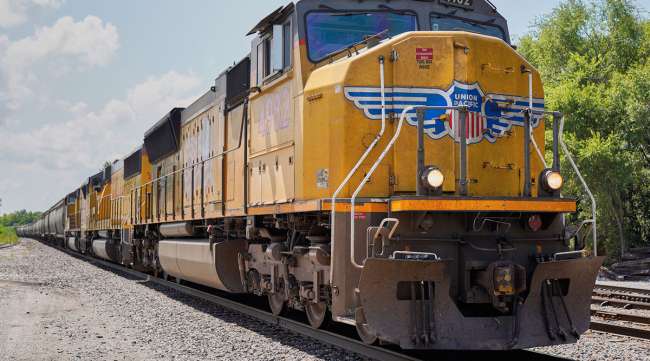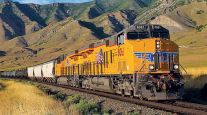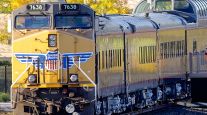Government Sues Union Pacific Over Using Flawed Vision Test

[Stay on top of transportation news: Get TTNews in your inbox.]
OMAHA, Neb. — The federal government has joined several former workers in suing Union Pacific over the way it used a vision test to disqualify workers the railroad believed were colorblind and might have trouble reading signals telling them to stop a train.
The lawsuit announced Oct. 2 by the Equal Employment Opportunity Commission on behalf of 21 former workers is the first the government filed in what could eventually be hundreds — if not thousands — of lawsuits over the way Union Pacific disqualified people with a variety of health issues.
These cases were once going to be part of a class-action lawsuit that the railroad estimated might include as many as 7,700 people who had to undergo what is called a “fitness-for-duty” review between 2014 and 2018.
Lawyers for the plaintiffs estimate nearly 2,000 of those people faced restrictions that kept them off the job for at least two years if not indefinitely. But the railroad hasn’t significantly changed its policies since making that estimate in an earlier legal filing, meaning the number has likely grown in the past five years.
What does it take to become the best technician in the country? Hear from two experts who supervised the exams at TMCSuperTech. Tune in above or by going to RoadSigns.ttnews.com.
Union Pacific has vigorously defended itself in court and refused to enter into settlement talks with the EEOC. The railroad has said it believes it was necessary to disqualify workers to ensure safety because it believed they had trouble seeing colors or developed health conditions such as seizures, heart problems or diabetes that could lead to them becoming incapacitated. They also noted federal rules require color vision testing.
“It is critical for the safety of our employees and communities where we operate that conductors and locomotive engineers correctly see and interpret the various signals that direct train movement,” railroad spokeswoman Kristen South said.
Often the railroad made its decisions after reviewing medical records and disqualified many even if their own doctors recommended they be allowed to return to work.
Railroad safety has been a key concern nationwide this year ever since a Norfolk Southern train derailed in eastern Ohio near the Pennsylvania line in February and spilled hazardous chemicals that caught fire, prompting evacuations in East Palestine. That wreck inspired a number of proposed reforms from Congress and regulators that have yet to be approved.
“Everyone wants railroads to be safe,” said Gregory Gochanour, regional attorney for the EEOC’s Chicago District. “However, firing qualified, experienced employees for failing an invalid test of color vision does nothing to promote safety, and violates the ADA (Americans with Disabilities Act).”
Want more news? Listen to today's daily briefing above or go here for more info
This lawsuit focuses on a vision test that Union Pacific developed called the “light cannon” test that involves asking workers to identify the color of a light on a mobile device placed a quarter of a mile away from the test taker. The EEOC said in its lawsuit that the test doesn’t replicate real-world conditions or show whether workers can accurately identify railroad signals.
Some of the workers who sued had failed Union Pacific’s light cannon test but passed another vision test that has the approval of the Federal Railroad Administration. The other workers who sued had failed both tests but presented medical evidence to the railroad that they didn’t have a color vision problem that would keep them from identifying signals.
The workers involved in the lawsuit were doing their jobs successfully for Union Pacific for between two and 30 years. The workers represented in the EEOC lawsuit worked for the company in Minnesota, Illinois, Arizona, Idaho, California, Kansas, Nebraska, Oregon, Washington and Texas.
The Omaha, Neb.-based railroad is one of the nation’s largest with tracks in 23 Western states.





